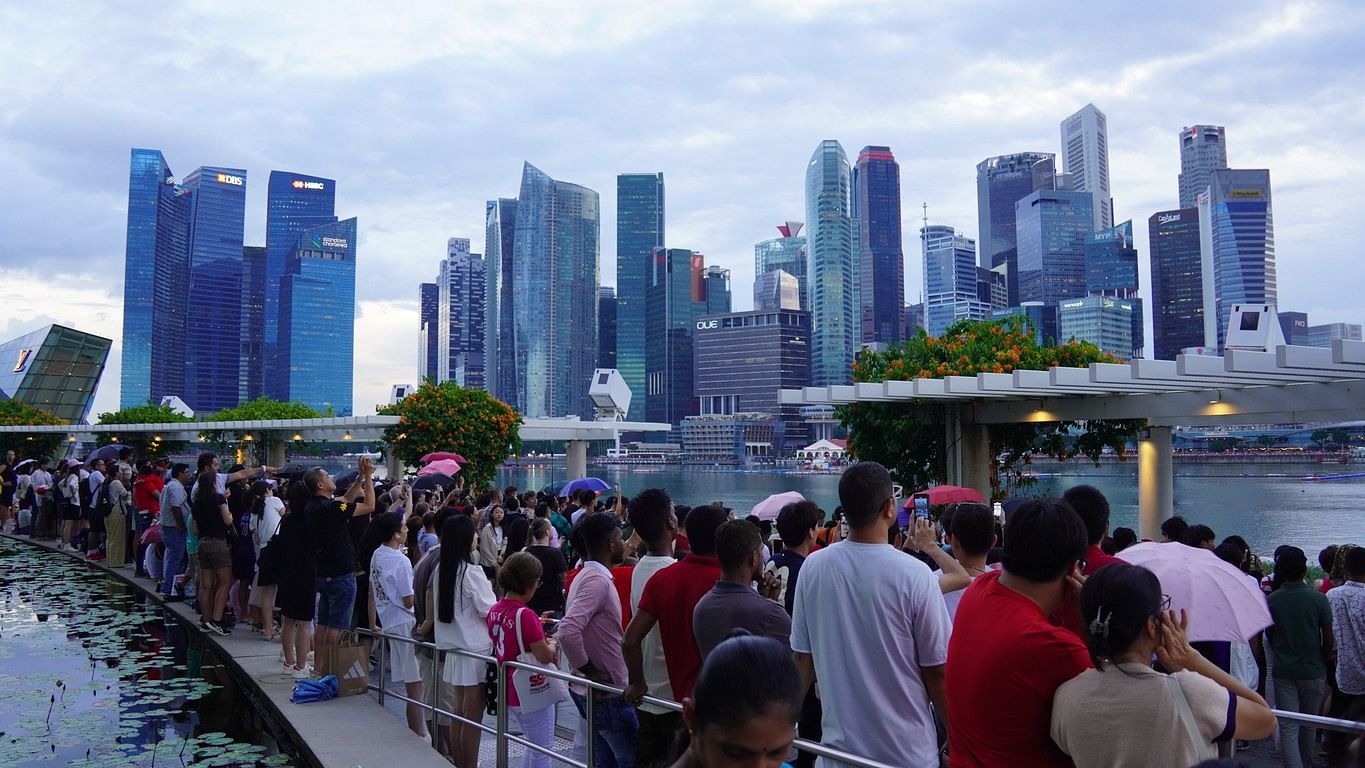
Singaporeans witness the Singapore National Day performance at Marina Bay. (File photo)
Credit: iStock Photo
Singapore: Singapore could see a shrink in population without immigration in about 10 years, a demographic change which will have far-reaching consequences, including on the size of the city-state's workforce and economic dynamism, a media report said on Monday.
On September 9, Minister in the Prime Minister’s Office (PMO) Indranee Rajah said in a reply to a parliamentary question: “Based on current trends, the number of citizen deaths could exceed the number of citizen births in the first half of the 2030s.”
There were 24,726 citizen deaths in 2023. This was a 40 per cent jump from 17,691 deaths in 2014, The Straits Times newspaper reported.
In contrast, citizen births fell 13 per cent over the same time period. There were 28,877 births in 2023 and 33,193 in 2014, the report said.
Citizen births refer to those of babies who have at least one Singaporean parent, as such babies automatically get Singapore citizenship at birth.
In her reply, Indranee said the projections are meant to illustrate the growth and change in population that could happen if certain demographic assumptions prevail over the projected period. These assumptions may or may not be realised, she added.
Dr Tan Poh Lin, a senior research fellow at the Institute of Policy Studies, said the actual year in which deaths overtake births is “not that significant”.
More critical is the pace at which the difference between the number of deaths and births continues to grow, as the “rapid speed of change in the population and workforce size will make it more difficult for society and the economy to adjust”, she was quoted as saying in the report.
The main implications of a shrinking population are that the resident labour force would start to decline, and all economic activity tied to population numbers would also face a stagnant or declining market, said Associate Professor Walter Theseira, a labour economist from the Singapore University of Social Sciences.
He added: “Any economic activity catering to the domestic consumption sector, such as our food and beverage and retail, would suffer significant drag from a declining resident population.
Dr Leong Chan-Hoong, head of the Social Cohesion Research Programme at the S. Rajaratnam School of International Studies at Nanyang Technological University, said an older population would also potentially place a heavier tax burden on adults of working age.
Singapore’s population stood at 5.92 million as of June 2023, growing 5 per cent from 5.64 million the previous year, the report said.
From June 2022 to June 2023, the citizen population rose by 1.6 per cent to 3.61 million, while the permanent resident population increased by 3.7 per cent to 0.54 million. The non-resident population, which includes foreigners working or studying in Singapore, grew by 13.1 per cent from 1.56 million in June 2022 to 1.77 million in June 2023, according to the Population-In-Brief 2023 report.